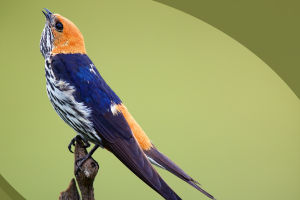Zebras are one of the common animals on the grassland, and their black and white stripes are one of their distinguishing features.
Yet, these stripes harbor fascinating secrets crucial for survival.
The stripes on zebras serve not only as decorations but also as crucial strategies for survival in the natural world.
The zebra's stripes can help them deceive predators. Research indicates that zebra stripes can confuse the visual systems of predators. When predators attempt to approach zebras, they are disrupted by the optical illusion of zebra stripes.
This causes illusions in the predators' visual systems, making it difficult for them to judge the direction and distance of the zebras. Additionally, zebra stripes can obscure the predators' line of sight, making it harder to target zebras when they are running at high speeds.
Apart from deceiving predators, what other functions do zebra stripes serve?
1. Social communication
Zebras are highly social animals, and they can recognize each other through their stripes, thereby maintaining their social relationships.
The stripes on zebras, while primarily black and white, are rich in patterns, with each zebra's stripes being unique—much like human fingerprints. This characteristic enables zebras to establish stable and reliable social networks.
2. Temperature regulation
As herbivores living in the wild, zebras need to cope with the challenges of the hot grasslands by running. Stripes can help them regulate their body temperature.
Stripes can reflect sunlight. Without these stripes, zebras could easily overheat due to direct sunlight exposure to their bodies. Furthermore, the black and white stripes in zebra reflect sunlight, reducing the rise in core temperature.
Stripes can form a convective layer. When black and white stripes traverse the zebra's body, they create a boundary layer, preventing heat from accumulating on the zebra's skin while allowing air to flow through them for cooling. Experimental evidence shows that black-and-white boundaries can make the temperature difference on the zebra's skin surface close to one degree.
3. Protection against insect bites
Stripes can help prevent insect bites. In the African grasslands, zebras are surrounded by many natural enemies, such as mosquitoes, flies, and ticks. Scientific experiments have shown that zebra stripes can resist bites from these insects.
When insects fly over, they are often attracted by the strong contrast of black and white stripes on the zebra's body, losing their orientation externally. If insects land on the zebra's skin, zebras can also shake their bodies to drive them away.
Zebra stripes are unique features on zebras' bodies that serve multiple purposes. They help zebras avoid insect bites and protect themselves, while also playing an important role in social communication. This also makes us wonder, as humans, if there may be many "stripes" we have yet to discover.
Currently, scientists are still studying the functions of zebra stripes, and it is believed that there will be more interesting discoveries in the future.


